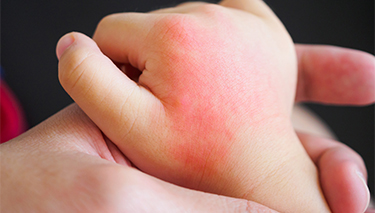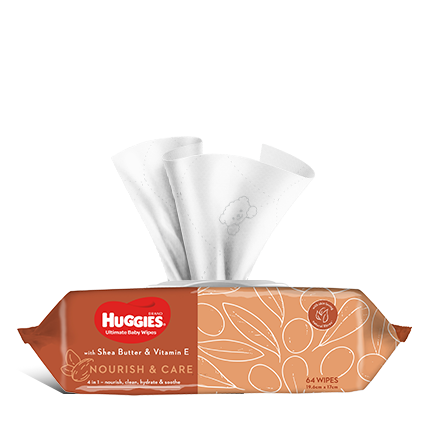Most of us have some sense of the importance of iron in health. You may already know that iron is used in many bodily functions including, blood production, oxygen delivery, energy production, collagen production, immunity and detoxification of chemicals in the body. Growing babies, toddlers, preschoolers and teenagers (particularly girls) need to ensure they gain adequate iron, not only because they are growing, but also because consequently their blood volume is increasing. While our body depends on iron to function, sadly, iron deficiency is a common problem in our young children; iron is the most common nutrient deficiency, affecting an estimated 15 per cent of our population, with young children being particularly vulnerable. Iron also is one of the most over-used supplements, so, like most things in life, balance is the key. Let’s take a more in-depth look at how iron can be insufficient in a child’s diet and ways to remedy this.
Iron deficiency and anaemia
Did you know that iron deficiency and anaemia are not the same thing? The former is where the iron stores in the body are running low. The stages of iron deficiency progress from low iron stores to the point where, if this persists, red blood cell production is hindered (specifically haemoglobin, which is the iron-carrying part of blood).
The many causes iron deficiency
The reasons why a baby, child or adult becomes low in iron are varied across these life stages. Babies, children and teens are still growing at a fast rate and their blood volume is increasing, hence they are more susceptible to iron deficiency. Babies begin to run low in iron they were born with at about six months, so need iron from their diet to meet the iron-related body functions. Breastmilk alone generally no longer can meet their iron needs.
Some factors in iron deficiency in childhood may include:
- Babies born premature or very small
- Weaning onto low or non-iron fortified formula
- Late introduction or acceptance of solid foods
- Inadequate iron in the diet, most commonly from a lack of heme iron-containing foods such as meat
- Excessive milk intake
- Absorption problems or parasites and gastro-intestinal issue, such as celiac disease
- Imbalanced vegetarian or similar diet
- Fussy eating, dieting or grazing
- High plant chemical (phytates) intake
- Lack of vitamin C
- Excessive tannin intake
Eating habits involved in iron deficiency in childhood
Fussy eating and unbalanced eating habits, for example refusing to eat meat, grazing on fruit and crackers, eating a limited diet, and drinking excessive fluids other than water can impact on nutrient balance.
A great example of how an excess of a food can affect nutrients is too much cows’ milk, it can pose a problem specifically with iron. Let’s take a look at our dearly-loved ‘milkaholics’: excessive intake and an over-reliance on milk can inadvertently replace foods rich not only in iron but other nutrients. Most parents look towards cows’ milk for calcium, and yes milk is a great source of calcium, however, you can have too much of a good thing. Excessive amounts of calcium can interfere with iron uptake in the body. Wait, there is more? Milk, is not only a poor source of iron (goat’s milk has even less iron), it is very energy dense and just one glass or bottle can displace a meal. It’s not uncommon for an apparently fussy foodie to be ‘hooked’ on milk, which eventually replaces whole food/meals and may interfere with iron as well as reduce their intake of iron-rich foods. What a cycle. For more on milk , see our article on Milk intake and weaning.
Lastly, it appears that cows’ milk can cause slight bleeding in the intestinal canal of infants, which further adds to baby’s iron requirements. Cows’ milk is not recommended in the first year except in moderate quantities eg. as part of other foods such as a cheese sauce or custard.
Signs of iron deficiency – what should I look out for?
Children who are iron deficient may experience fatigue, fainting, pale skin, loss of appetite, fast heart rate, brittle or spoon shaped nails, swollen and/or smooth tongue, pica (wanting to eat indigestible products such as sand or dirt), increased susceptibility to infections and potentially failure to thrive.
If you suspect there is a problem, seek professional health advice and don’t be tempted to use supplements without advice. Excessive iron in the body can have severe health implications.
What foods are good sources of iron?
Foods differ in their iron content and iron-giving ability (bioavailability), see Figure 1. Animal products contain haem (blood) iron that has superior bioavailability to the non-haem iron many plants, such as parsley and spinach, contain. Plants contain compounds that bind their iron and render it harder for humans to use. Studies show that non-haem foods by and large provide most of the iron foods in the diet of children who are iron deficient.
So yes, meat, liver and other animal products are rich sources of iron, Figure 2 lists other sources of iron. Offering foods containing iron with vitamin C foods will improve the uptake of the iron.
TOP TIP: Keep in mind that iron-fortified cereals can also be used for toddlers and preschoolers – they are an excellent source of absorbable iron. Add them to other breakfast cereals, smoothies, and use in baking etc.
How can I increase iron levels in my child’s diet?
Ideas on how to increase iron (for both meat and non-meat eaters) include:
- Increasing the number of servings a week of iron-rich foods such as foods with haem iron, including meat, chicken and fish.
- Vegetarians should eat four servings of medium iron-rich foods a day.
- Using iron-fortified foods in baking.
- Providing a food high in vitamin C with each meal or offer a vitamin C-rich drink such as guava juice. Just 100 ml of guava juice contains 230 mg of vitamin C. and It’s thought that just 50 mg of vitamin C will * enhance iron absorption. Pure blackcurrant juice contains 200 mg of vitamin C and 100 g of strawberries 77 mg.
- Increasing the number of ways meats are served.
- Taking care with non-haeme iron-containing foods, to reduce the phytates that bind iron: ensure they are properly cooked, soaked or sprouted to avoid binding iron.
- Avoiding tea and coffee as the compounds in them can also bind iron – obviously not something children should have either.
- Offering calcium-rich foods away from iron-rich foods.
- Using weaning formula and cereals fortified with iron.
This information has been provided by Leanne Cooper from
Sneakys baby and child nutrition. Leanne is a qualified nutritionist and mother of two very active boys. Copyright 2009
This fact sheet may be reproduced in whole or in part for education and non-profit purposes with acknowledgment of the source. It may not be reproduced for commercial use or sale. The information provided is not intended to replace medical advice.
For more information see Kid’s nutrition or Baby Care
Last Published* May, 2024
*Please note that the published date may not be the same as the date that the content was created and that information above may have changed since.




















